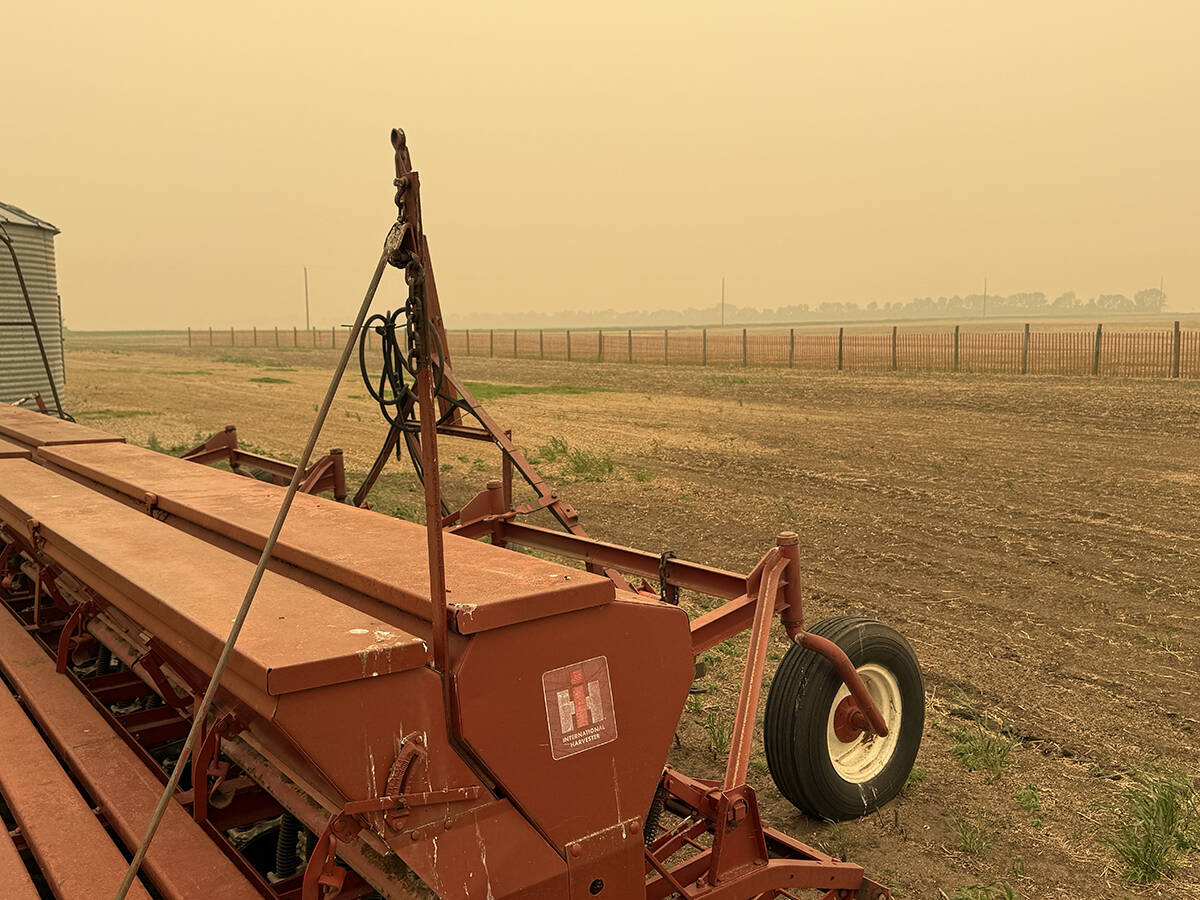It accounts for less than 0.0000002 percent of the content of the durum wheat grown by prairie farmers.
But even that minuscule amount of cadmium is enough to worry some overseas buyers.
It’s also enough to have prompted Canadian wheat breeders to develop a new variety of durum containing even lower levels of the unwanted heavy metal.
That new variety, called AC Strongfield, won’t be commercially available until 2006, but industry officials expect it to become the dominant durum grown in Western Canada within a few years.
Read Also

Wildfires have unexpected upside this year
One farmer feels smoke from nearby wildfires shrouded the July skies and protected his crop from the sun’s burning rays, resulting in more seeds per pod and more pods per plant.
That popularity won’t be because of its low cadmium content, something about which farmers know or care little, but because of more traditional concerns such as yield, test weight and protein content.
“I expect because of its agronomic qualities, it would become the major variety,” said John Clarke, an Agriculture Canada wheat breeder from Swift Current, Sask., who has spent the past decade developing Strongfield.
The new variety, which is owned by SeCan and is in the second of three years of seed multiplication, has a 12 percent yield advantage over Kyle and seven percent over Avonlea. It has higher test weight and protein content and a similar disease profile.
Cadmium became an issue in the early 1990s, when it was identified by international food safety organizations as a potential concern in certain crops, including flaxseed, sunflowers and durum.
The European Union and the Codex Alimentarius Commission have recently established acceptable tolerance levels that work out to two parts per billion, although no formal restrictions have yet been implemented.
Canadian durum has averaged about 1.3 ppb over the past 10 years, with the occasional shipment approaching two ppb, according to tests conducted by the Canadian Grain Commission.
Strongfield boasts cadmium levels of around one ppb, which should drive down the Canadian durum average even further as it enters the production and marketing stream.
That should give Canadian durum a competitive advantage in world markets, says Canada’s wheat marketing agency.
“We anticipate that by the time various countries adopt these cadmium tolerance levels on exports, we’ll be shipping durum that’s well below them,” said Graham Worden of the Canadian Wheat Board’s market development division.
Durum breeders in the U.S. are also working on the cadmium issue, but the so-called desert durum grown in Arizona and California is particularly high in cadmium.
Cadmium levels can be controlled to some extent through management. For example, conservation tillage tends to boost cadmium and fertilizer use can do the same. Acid soils also can produce more cadmium.
But it’s essentially a function of genetics, with some varieties simply predisposed to take up more cadmium regardless of soil conditions.
Clarke’s work at Swift Current involved identifying the single gene that influences cadmium uptake in older lines, then using conventional breeding techniques to move that gene into improved higher yielding varieties.
Clarke said the development of Strongfield attests to the value of co-operation between marketers, who are aware of future trends in customers’ demand, and plant breeders, who can use that information to develop varieties to meet those demands.
“The CWB were the ones who first alerted the breeding community to the international discussions about cadmium and suggested we work towards this,” he said.
Worden said the development of Strongfield illustrates the crop breeding system is working as it’s supposed to, for the ultimate benefit of farmers. He said the variety should have no trouble gaining acceptance from end users.
“It has good colour, good milling quality and good pasta-making quality,” he said. “It’s a really good variety.”














